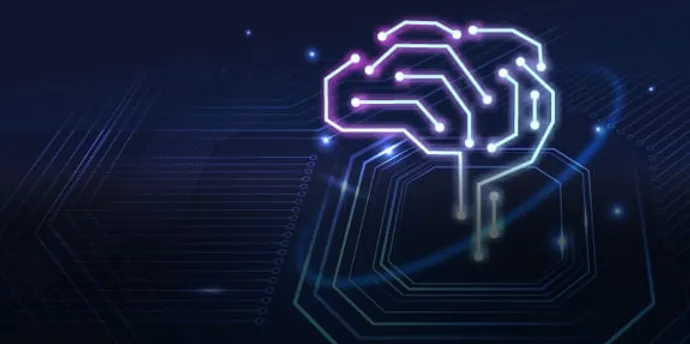Bias in AI refers to the systematic and unfair favoritism of certain groups or categories over others, which can arise from flawed data and algorithms. The presence of bias in AI models can have far-reaching consequences on society, as these models are widely used to predict and inform important decisions.
🔍 Real-World Impact
For instance, biased AI algorithms in facial recognition systems can lead to misidentification and wrongful arrests, while biased hiring algorithms may perpetuate discrimination in the workplace.
Facial Recognition Systems: A Case Study in Bias
Facial recognition technology has become increasingly prevalent in security systems, law enforcement, and consumer applications. However, numerous studies have revealed significant biases in these systems:
Performance Disparities
- Gender Bias: Higher error rates for women, particularly women of color
- Racial Bias: Significantly higher false positive rates for Black individuals
- Age Bias: Reduced accuracy for elderly individuals and children
- Dataset Representation: Training data predominantly featuring white, male faces
MIT Study Findings
Research by Joy Buolamwini revealed stark performance differences:
- • 0.8% error rate for light-skinned men
- • 34.7% error rate for dark-skinned women
- • 43x higher error rate for intersectional groups
Real-World Consequences
- • Wrongful arrests and detentions
- • Discriminatory surveillance practices
- • Exclusion from services and facilities
- • Privacy violations for vulnerable groups
Hiring Algorithms: Perpetuating Workplace Discrimination
AI-powered recruitment tools promised to eliminate human bias in hiring, but instead have often amplified existing prejudices:
Amazon's Recruitment Tool
Amazon scrapped an AI recruiting tool that showed bias against women, particularly for technical roles.
- • Penalized resumes that included the word "women's"
- • Downgraded graduates from all-women's colleges
- • Trained on 10 years of male-dominated hiring patterns
Resume Screening Bias
Automated resume screening systems often exhibit multiple forms of bias:
- • Name-based discrimination (ethnic and gender bias)
- • Educational institution prestige bias
- • Geographic location bias
- • Career gap penalties affecting women disproportionately
Criminal Justice: Risk Assessment Algorithms
AI systems used in criminal justice for risk assessment have revealed troubling biases that affect sentencing and parole decisions:
COMPAS Algorithm Analysis
ProPublica's investigation of the COMPAS recidivism prediction tool revealed:
- Racial Bias: Black defendants were twice as likely to be incorrectly flagged as high-risk
- False Positive Disparity: 45% false positive rate for Black defendants vs. 23% for white defendants
- Perpetuating Inequality: Historical arrest patterns influencing future predictions
Healthcare AI: Diagnostic and Treatment Disparities
Medical AI systems have shown concerning biases that can affect patient care and health outcomes:
Diagnostic Imaging Bias
- • Lower accuracy for women in cardiac imaging
- • Skin cancer detection bias against darker skin tones
- • Underrepresentation of diverse populations in training data
Treatment Recommendation Systems
- • Pain assessment algorithms showing racial bias
- • Drug dosage recommendations biased toward certain demographics
- • Mental health screening tools with gender and cultural biases
Financial Services: Credit Scoring and Lending
AI-driven financial services have faced scrutiny for perpetuating economic inequalities:
Credit Scoring Algorithms
Alternative credit scoring methods that use non-traditional data sources can inadvertently discriminate against certain communities based on factors like zip code, shopping patterns, or social media activity.
Mortgage Lending Decisions
AI systems in mortgage lending have shown patterns of discrimination that mirror historical redlining practices, affecting access to homeownership for minority communities.
Insurance Premium Calculations
AI-powered insurance algorithms may use proxy variables that correlate with protected characteristics, leading to discriminatory pricing practices.
Broader Societal Implications
The pervasive nature of AI bias has far-reaching consequences for society:
Systemic Impact
Amplification of Inequality
AI systems can amplify existing social inequalities by encoding historical biases into automated decision-making processes.
Erosion of Trust
Biased AI systems undermine public trust in technology and can lead to resistance to beneficial AI applications.
Economic Consequences
Discriminatory AI systems can limit economic opportunities and perpetuate wealth gaps across different demographic groups.
Democratic Values
Biased AI systems can threaten democratic principles of equality and fairness in society.
Industry Response and Mitigation Efforts
Organizations and researchers are developing various approaches to address AI bias:
Technical Solutions
- • Diverse dataset compilation and augmentation
- • Algorithmic fairness constraints and debiasing techniques
- • Continuous monitoring and bias testing frameworks
- • Explainable AI methods for transparency
Organizational Changes
- • Diverse AI development teams
- • Ethics review boards and bias auditing processes
- • Stakeholder engagement and community involvement
- • Regular bias training and awareness programs
Lessons Learned
These real-world examples of AI bias provide valuable insights for building more equitable AI systems:
🎯 Key Takeaways
- • Bias can emerge at any stage of the AI development lifecycle
- • Historical data often reflects societal biases that AI systems can perpetuate
- • Regular auditing and testing are essential for identifying and addressing bias
- • Diverse perspectives in AI development teams help identify potential blind spots
- • Transparency and accountability are crucial for building trustworthy AI systems
As AI continues to play an increasingly important role in society, addressing bias is not just a technical challenge but a moral imperative. By learning from these real-world examples, we can work toward building AI systems that are fair, inclusive, and beneficial for all members of society.
Abhishek Ray
CEO & Director
Abhishek Ray conducts research on AI bias and fairness, analyzing real-world case studies to understand how bias manifests in different industries and its practical implications for businesses and society.
